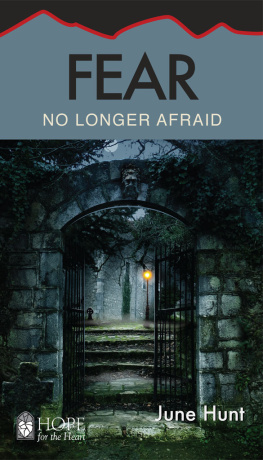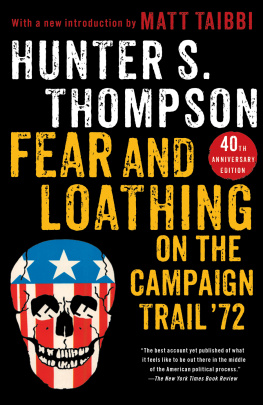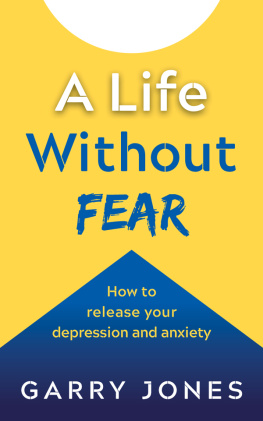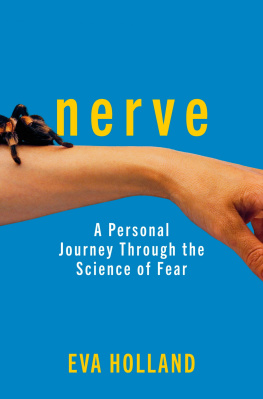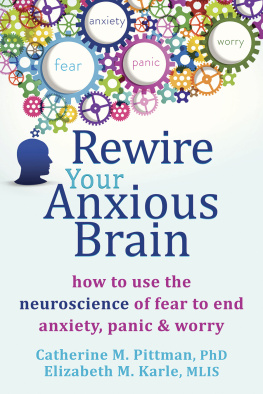Praise for
How Risky Is It, Really?
The perception (and misperception) of risk has profound effects on everything from environmental policy to foreign policy, from our health and consumer decisions to our sense of security and well-being. It is a topic at the frontier of research in cognitive science, economics, and political science. This book is a clear, balanced, and lively introduction to this crucial body of knowledge.
Steven Pinker,
bestselling author of How the Mind Works
How Risky Is It, Really? is going to change the way people think.
Lester R. Brown,
President, Earth Policy Institute,
and author of Plan B
Our problems with accurate risk assessment have serious consequenceswe worry ourselves sick over trivialities, pay to protect ourselves from the wrong things, avoid something we deem risky by doing something riskier. In this clever, accessible, and surprisingly nonjudgmental book, David Ropeik tackles this subject, ranging from the realms of psychology and neuroscience to funny, winning self-reflection. It is both a field monograph about the foibles of one species as well as a self-help manual. Read this book, think about it, and you will be both safer and saner.
Robert M. Sapolsky, Ph.D.,
author of Why Zebras Dont Get Ulcers
How Risky Is It, Really?
Why Our Fears Dont Always Match the Facts
DAVID ROPEIK


Copyright 2010 by The McGraw-Hill Companies, Inc. All rights reserved. Except as permitted under the United States Copyright Act of 1976, no part of this publication may be reproduced or distributed in any form or by any means, or stored in a database or retrieval system, without the prior written permission of the publisher.
ISBN: 978-0-07-163564-6
MHID: 0-07-163564-5
The material in this eBook also appears in the print version of this title: ISBN: 978-0-07-162969-0, MHID: 0-07-162969-6.
All trademarks are trademarks of their respective owners. Rather than put a trademark symbol after every occurrence of a trademarked name, we use names in an editorial fashion only, and to the benefit of the trademark owner, with no intention of infringement of the trademark. Where such designations appear in this book, they have been printed with initial caps.
McGraw-Hill eBooks are available at special quantity discounts to use as premiums and sales promotions, or for use in corporate training programs. To contact a representative please e-mail us at bulksales@mcgraw-hill.com.
TERMS OF USE
This is a copyrighted work and The McGraw-Hill Companies, Inc. (McGraw-Hill) and its licensors reserve all rights in and to the work. Use of this work is subject to these terms. Except as permitted under the Copyright Act of 1976 and the right to store and retrieve one copy of the work, you may not decompile, disassemble, reverse engineer, reproduce, modify, create derivative works based upon, transmit, distribute, disseminate, sell, publish or sublicense the work or any part of it without McGraw-Hills prior consent. You may use the work for your own noncommercial and personal use; any other use of the work is strictly prohibited. Your right to use the work may be terminated if you fail to comply with these terms.
THE WORK IS PROVIDED AS IS. McGRAW-HILL AND ITS LICENSORS MAKE NO GUARANTEES OR WARRANTIES AS TO THE ACCURACY, ADEQUACY OR COMPLETENESS OF OR RESULTS TO BE OBTAINED FROM USING THE WORK, INCLUDING ANY INFORMATION THAT CAN BE ACCESSED THROUGH THE WORK VIA HYPERLINK OR OTHERWISE, AND EXPRESSLY DISCLAIM ANY WARRANTY, EXPRESS OR IMPLIED, INCLUDING BUT NOT LIMITED TO IMPLIED WARRANTIES OF MERCHANTABILITY OR FITNESS FOR A PARTICULAR PURPOSE. McGraw-Hill and its licensors do not warrant or guarantee that the functions contained in the work will meet your requirements or that its operation will be uninterrupted or error free. Neither McGraw-Hill nor its licensors shall be liable to you or anyone else for any inaccuracy, error or omission, regardless of cause, in the work or for any damages resulting there from. McGraw-Hill has no responsibility for the content of any information accessed through the work. Under no circumstances shall McGraw-Hill and/or its licensors be liable for any indirect, incidental, special, punitive, consequential or similar damages that result from the use of or inability to use the work, even if any of them has been advised of the possibility of such damages. This limitation of liability shall apply to any claim or cause whatsoever whether such claim or cause arises in contract, tort or otherwise.
To Toby, for her wisdom, patience, insight, and support.
To Rachel, Matt, and Ina, for their ideas and enthusiasm.
To Misha and Yuri, for waiting so patiently to go for their daily walk.
And to my friends and fellow travelers... may you make healthy choices.
Contents
ACKNOWLEDGMENTS
This book is a woefully brief introduction to the wisdom and research findings of many people. To their work, I have added my experience as a journalist, my interpretations, clarifications, and emphases. For anything that accurately reflects their findings, they deserve the true credit. For any errors or omissions, I deserve the blame.
In addition to those already cited in this book, I am deeply grateful to Paul Slovic, a pioneer in research on the perception of risk; he has graciously supported my efforts to summarize the findings of that field and bring those insights to a wider audience. I am also grateful to other leaders in this field, including Baruch Fischhoff, Sarah Lichtenstein, and Melissa Finucane, whose findings have contributed significantly to my thinking and to the foundation for this book.
In the field of neuroscience, I am grateful for my informal editor, Caroline Davis, a graduate student who studies the amygdala in the lab of Paul Whalen at Dartmouths Department of Psychology and Brain Sciences, and for guidance in the past from Joseph LeDoux and Liz Phelps of New York University.
I am grateful to many people who shared their time and thoughts: Sheldon Krimsky at Tufts, Steve Woloshin at Dartmouth, Daniel Kahan at Yale Law School, Matthew Adler at University of Pennsylvania Law School, John Evans at Harvard, George Lowenstein at Carnegie Mellon, Ellen Peters at the University of Oregon, Jonathan Weiner at Duke, Dr. Matthew Friedman of the Veterans Administration, Robert Sapolsky at Stamford, Denis Mileti of the University of Colorado, Vivenne Parry of the BBC, and Marc Poumadere of LEcole Normale Superieure.
Thanks to Lester Brown for the push to write this. And thanks to all my friends and colleagues who showed sincere interest in this projector at least faked it really welland helped me with lots of ideas and encouragement.
INTRODUCTION
By the animal instinct that is awakened in us we are led and protected. It is not conscious; it is far quicker, much more sure, less fallible, than consciousness.
ERICH MARIA REMARQUE, ALL QUIET ON THE WESTERN FRONT
The auditorium was jammed. The TV cameras were lined up down in front, aimed back at the crowd, ready to roll at the first loud voice. The moderator opened the floor to comments. Susan Napolitano leaped to her feet, her eyes wide and her face red.
Next page

